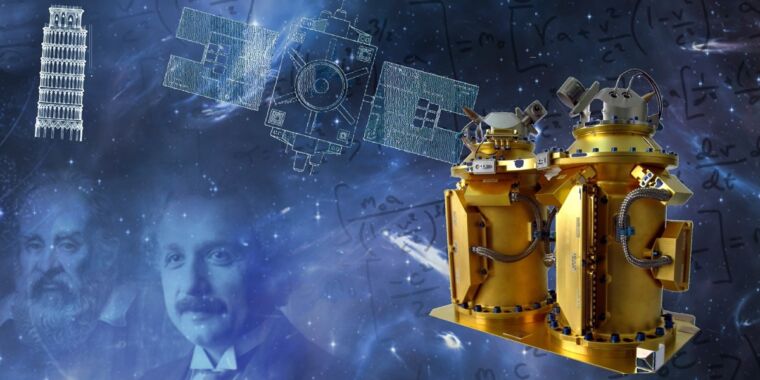
Einstein wins again: Space satellite confirms weak equivalence principle
arstechnica.com
One of the most counter-intuitive notions in physics is that all objects fall at the same rate, regardless of mass, aka the equivalence principle. This was memorably illustrated in 1971 by NASA Apollo 15 astronaut David Scott during a moonwalk. He dropped a falcon feather and a hammer at the same ti
1 Users
0 Comments
5 Highlights
5 Notes
Top Highlights
- One of the most counter-intuitive notions in physics is that all objects fall at the same rate, regardless of mass, aka the equivalence principle. This was memorably illustrated in 1971 by NASA Apollo 15 astronaut David Scott during a moonwalk. He dropped a falcon feather and a hammer at the same time via a live television feed, and the two objects...
- There's a long tradition of experimentally testing the weak equivalence principle, which forms the basis of Albert Einstein's general theory of relativity. In test after test over many centuries, the equivalence principle has held strong. And now the MICROSCOPE (Micro-Satellite à traînée Compensée pour l'Observation du Principe d'Equivalence) missi...
- Orbiting bodies, like the MICROSCOPE satellite, are free-falling continuously, making ideal laboratories for precision measurements on scales where violations might occur. Among other advantages, the environment is free from seismic vibrations or variations in the gravitational field caused by changes in the terrain (like nearby mountains). The sat...
- Per the equivalence principle, this should have no effect on how gravity acts upon both cylinders. So if MICROSCOPE measured any deviations, equivalence would be violated. The MICROSCOPE team published preliminary results in 2017, showing no signs of violation at a sensitivity of one part in 1014 over the two and a half years the experiment was in ...
- Physicists hope that eventually these precision experiments will uncover violations that can lead to new physical theories to explain dark matter or dark energy. Evidence for dark matter and dark energy comes from large-scale observations, such as those of the cosmic microwave background and distant supernovae. Future galaxy surveys will test diffe...
Tags
Einstein
Physics
Space
Gravitation
Theory
Domain
Ready to highlight and find good content?
Glasp is a social web highlighter that people can highlight and organize quotes and thoughts from the web, and access other like-minded people’s learning.